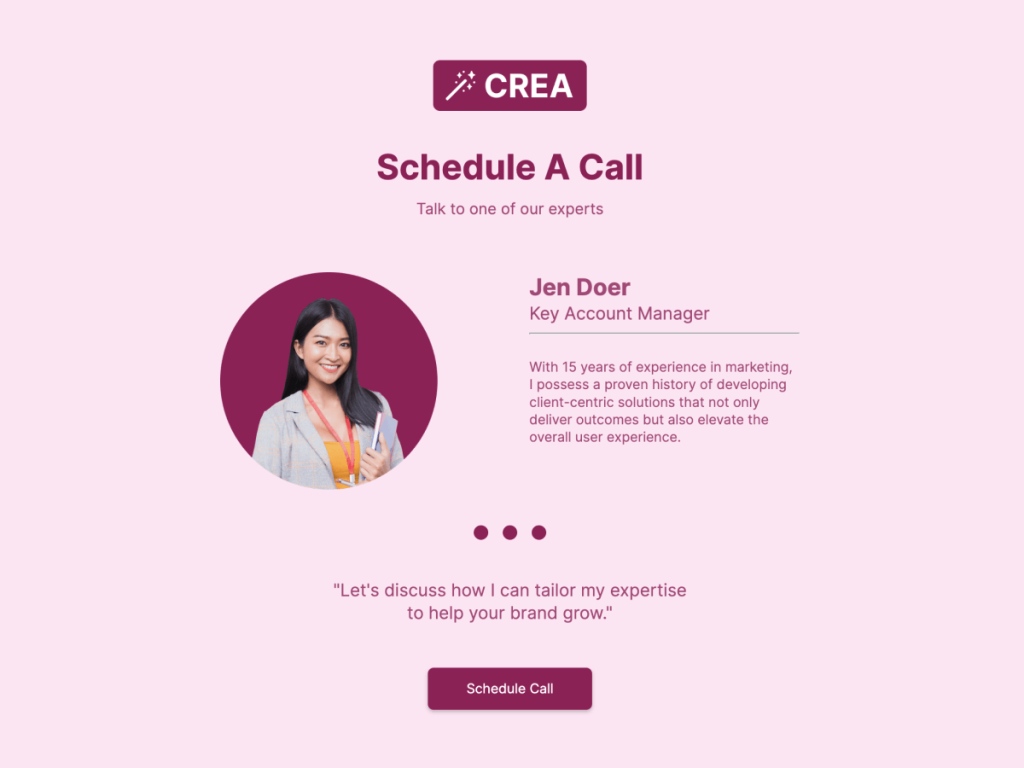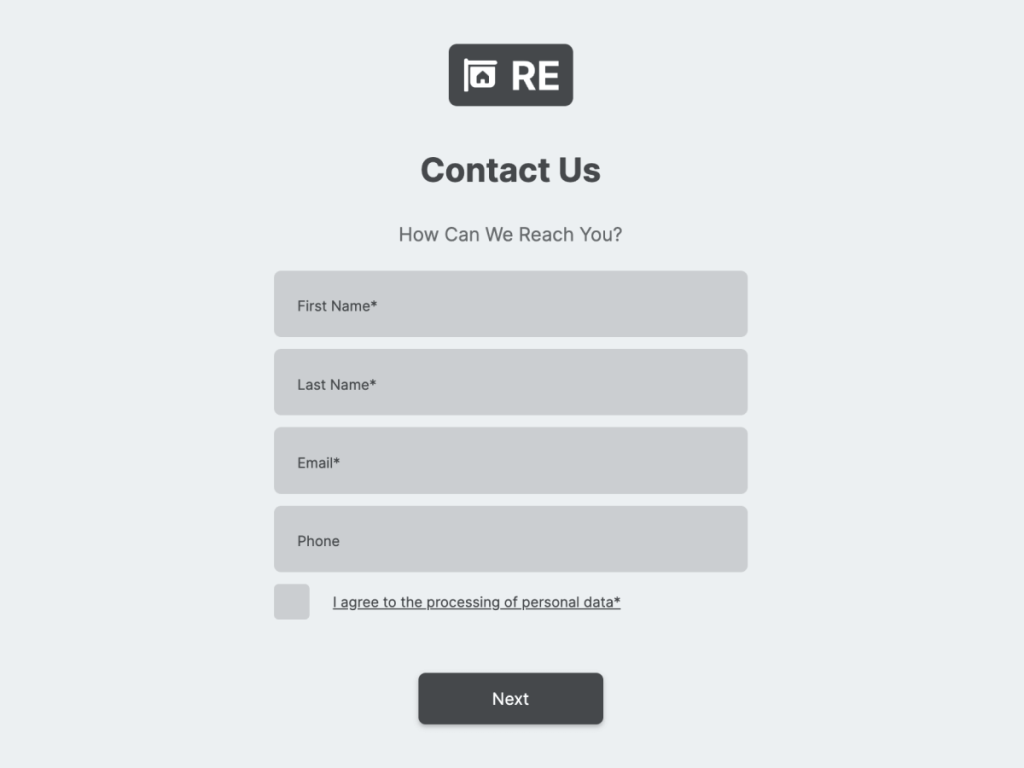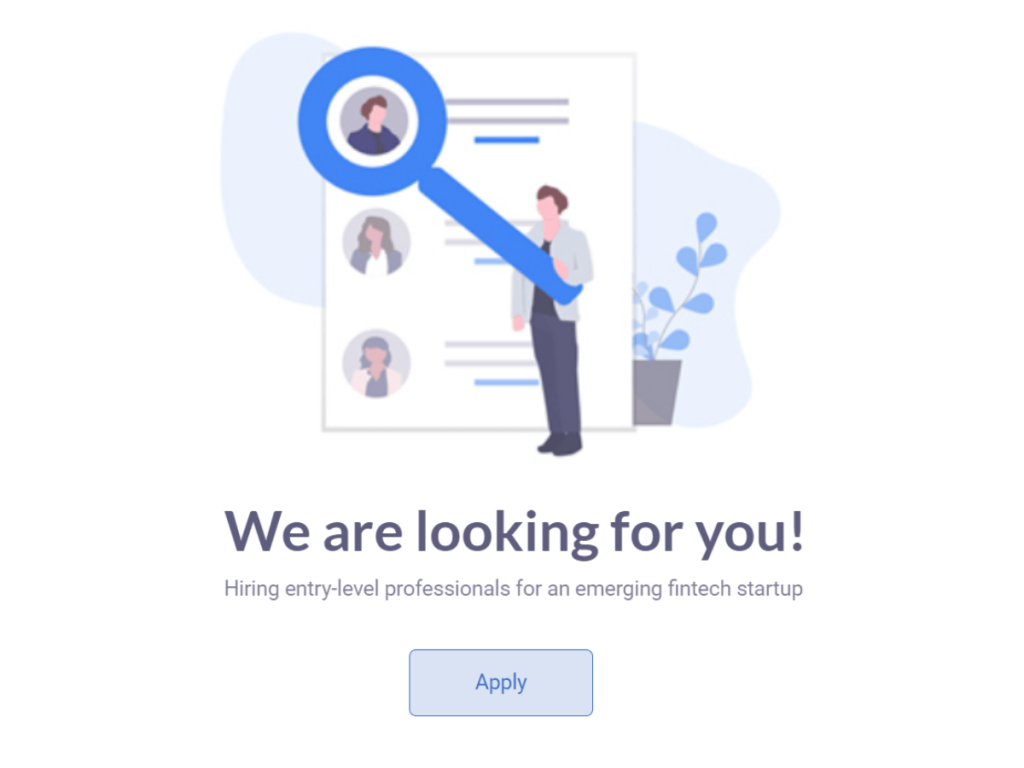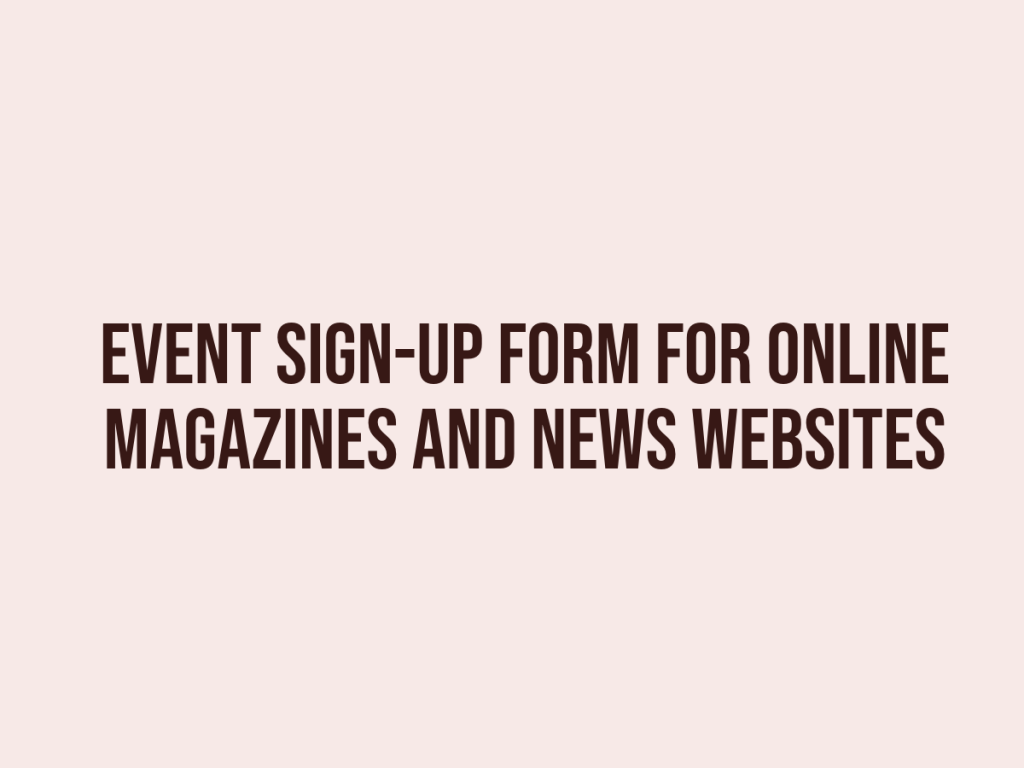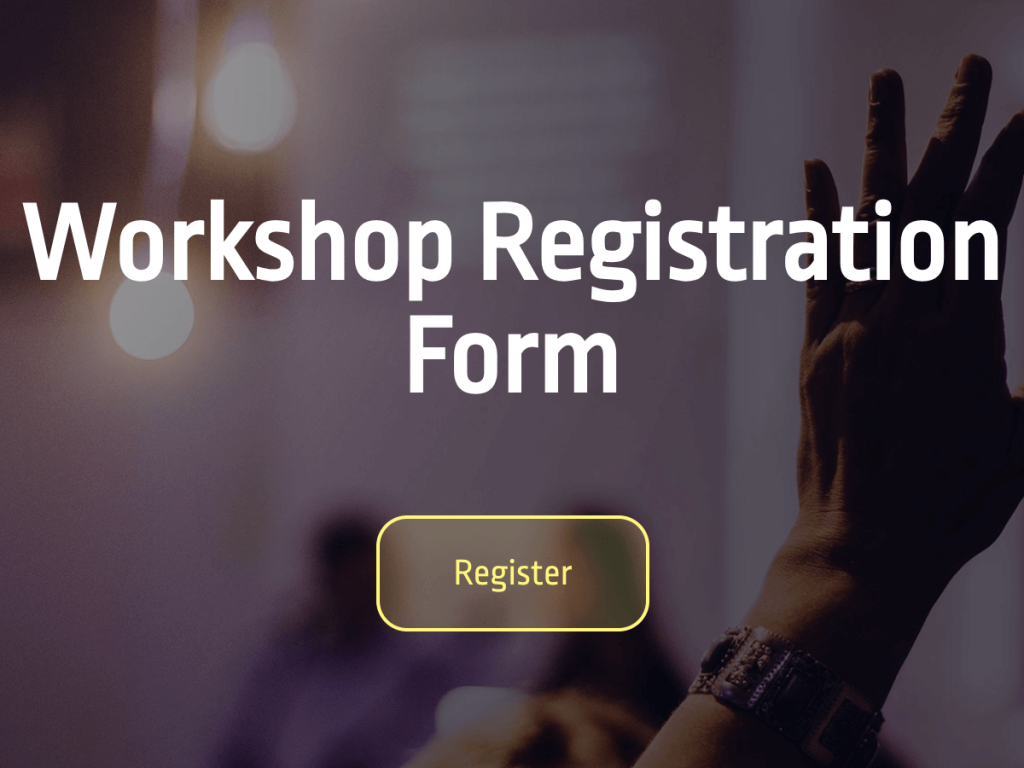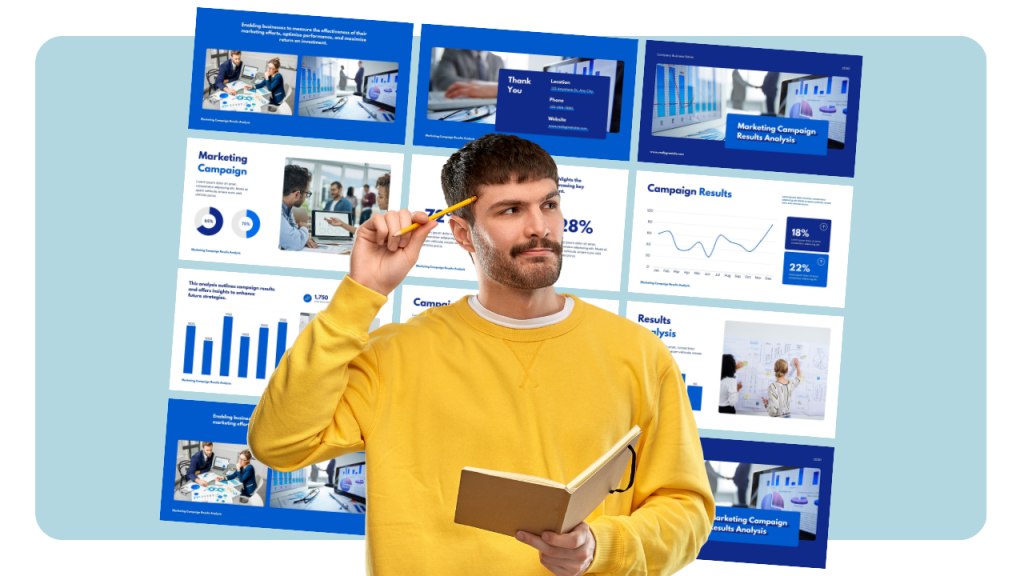“The average Click-Through Rate (CTR) for all Call-to-Action (CTA) buttons across every industry stands at an impressive 4.23%, surpassing the CTR typically achieved by Google ads.“
CTAs are more than just buttons on a page; they are strategic tools that can dramatically improve form conversion rates. The right CTA can transform a passive browser into an active participant, making it a critical component in the quest to boost engagement and business conversions.
This article showcases over 100 power call to action examples, each meticulously chosen to inspire and guide you in boosting your form conversion rates.
What is a Call-to-Action Button?
Calls to Action (CTA) is a prompt on a website that urges potential customers to take some specified action. It is typically presented in the form of a button or link. The primary purpose of a CTA is to prompt an immediate response or encourage an immediate sale. A unique call to action play an important role in guiding target audience through the conversion funnel, directing them from initial interest to the ultimate action. Whether it’s signing up for a free trial, scheduling a consultation, or downloading a piece of content, the CTA is your digital signpost, offering clear directions on what to do next.
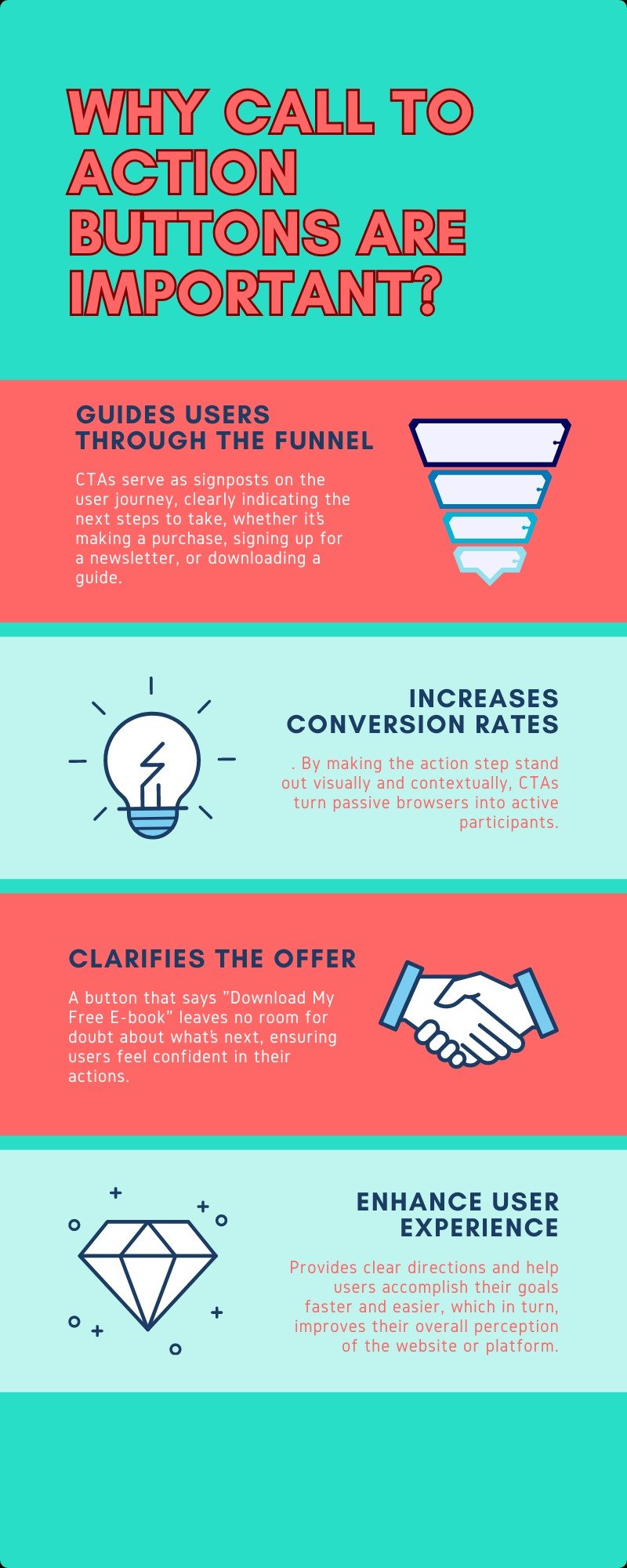
How to Design Your Call to Action
CTA button design ideas include more than just choosing a vibrant color and catchy action verbs. It requires a deep understanding of your audience's behavior and preferences, along with a strategic approach to design elements:
Color: The background color of your CTA button should stand out from the rest of the page but still fit within the overall design scheme. Color choice can evoke emotions and actions, so choose so choose best CTA button colors that align with the action you want the user to take.
Size and Placement: The button-based CTA should be large enough to notice without overwhelming the page. Its placement should be in a logical spot that follows the user’s eye path, typically after an offer’s description or at the bottom of the page content.
Messaging: The CTA button text should be direct and action-oriented. Use verbs that convey the action you want the user to take, such as "Download," "Subscribe," or "Get Started." The message should make the benefit to the user clear and immediate.
Psychological Triggers: Utilize psychological triggers like urgency ("Offer ends soon"), scarcity ("Only a few left"), or curiosity ("Find out what's next") to make the CTA more compelling.
A/B Testing: Continuously test different versions of your CTAs to find the most effective combination of elements. Experiment with different color schemes, placements, sizes, and wording to see what resonates best with your audience.
100+ Call to Action Button Examples to Boost Your Form Conversion Rates
Here is a list of 100+ best CTA button phrases for your online forms.
Newsletter Form
"Subscribe for Exclusive Insights!"
"Get the Latest News Delivered!"
"Unlock Weekly Wisdom!"
"Stay Ahead with Our Updates!"
"Join Our Community of Innovators!"
"Dive into Industry Secrets!"
"Never Miss an Update – Subscribe Now!"
"Your Weekly Dose of Inspiration!"
"Exclusive Content, Straight to Your Inbox!"
"Be the First to Know – Subscribe Today!"
Subscription Form
"Unlock Full Access Now!"
"Subscribe and Save Big!"
"Join the Premium Experience!"
"Elevate Your Experience – Subscribe Today!"
"Get More, Spend Less – Subscribe Now!"
"Exclusive Offers for Subscribers Only!"
"Your Gateway to Unlimited Access!"
"Transform Your Journey – Subscribe!"
"Step Up Your Game – Subscribe Now!"
"Subscribe for Endless Benefits!"
Webinar Form
"Reserve Your Free Spot Today!"
"Unlock Knowledge – Join Our Webinar!"
"Claim Your Seat – Limited Availability!"
"Master Your Skills – Free Webinar Access!"
"Learn from the Experts – Register Now!"
"Don’t Miss Our Exclusive Webinar!"
"Your Invitation to Expert Insights!"
"Secure Your Webinar Seat Now!"
"Transform Your Future – Join Us!"
"Free Webinar Registration – Sign Up Today!"
Sign Up for New Account
"Start Your Adventure – Sign Up Today!"
"Create Your Account and Explore!"
"Join Our Growing Community!"
"Unlock Your New Experience – Sign Up!"
"Begin Your Journey with Us – Register Now!"
"Welcome to Your New Favorite Place – Sign Up!"
"Get Started in Seconds – Create Your Account!"
"Join Us and Discover More!"
"Create Your Profile and Connect!"
"Your Path Starts Here – Sign Up!"
Product Demo Form
"See It in Action – Book a Demo!"
"Discover What’s Possible – Request a Demo!"
"Experience Our Solution Firsthand – Demo Now!"
"Get a Sneak Peek – Schedule Your Demo!"
"Unlock Your Exclusive Demo Today!"
"Take the First Step – Book Your Demo!"
"Witness Innovation – Request Your Demo Now!"
"Explore Our Features – Schedule a Demo!"
"Personalized Demo Just for You – Book Now!"
"See the Difference – Request a Demo!"
Contact Form
"Reach Out to Us – We’re Here to Help!"
"Have Questions? Get in Touch!"
"Let’s Connect – Contact Us Today!"
"Your Questions Matter – Send Us a Message!"
"Talk to Our Team – Contact Us Now!"
"We’d Love to Hear from You – Reach Out!"
"Need Assistance? Contact Us!"
"Start a Conversation – We’re Ready to Listen!"
"Your Feedback is Welcome Here – Message Us!"
"Connect with Experts – Send Your Inquiry Now!"
Event Registration Form
"Secure Your Spot Now!"
"Join the Exclusive Event!"
"Claim Your Early Bird Ticket!"
"Be Part of Something Big!"
"Reserve Your Place Today!"
"Unlock Your VIP Access!"
"Step Into the Spotlight!"
"Grab Your Seat Before It’s Gone!"
"Experience the Unforgettable!"
"Connect with the Community!"
Feedback and Survey Form
"Share Your Thoughts!"
"Let Your Voice Be Heard!"
"We Value Your Feedback!"
"Help Us Improve!"
"Take Our Quick Survey!"
"Your Opinion Matters!"
"Shape the Future with Us!"
"Provide Your Insight!"
"Feedback Wanted!"
"Join Our Feedback Loop!"
Free Trial Sign-Up
"Start Your Free Trial Now!"
"Experience Premium - On Us!"
"Get Instant Access!"
"Unlock Your Free Trial Today!"
"Try It, No Strings Attached!"
"Explore Free for 30 Days!"
"Dive In Risk-Free!"
"Begin Your Free Journey!"
"No Credit Card Required!"
"Experience Full Access!"
Downloadable Content (E-books, Whitepapers)
"Download Your Free Guide!"
"Unlock Expert Insights!"
"Get Your Comprehensive E-book!"
"Access Exclusive Content!"
"Discover the Latest Trends!"
"Grab Your Free Whitepaper!"
"Learn More with Our Guide!"
"Dive Deeper into Knowledge!"
"Transform Your Skills!"
"Expand Your Understanding!"
Donation Form
"Make a Difference Today!"
"Support Our Cause!"
"Join Our Mission!"
"Every Contribution Counts!"
"Donate Now and Change Lives!"
"Help Us Reach Our Goal!"
"Be a Part of the Solution!"
"Give Back Today!"
"Your Support is Crucial!"
"Empower Change with Your Donation!"
Service Appointment Booking
"Book Your Appointment Now!"
"Schedule Your Visit Easily!"
"Reserve Your Slot Today!"
"Secure Your Service Date!"
"Get Your Confirmation Instantly!"
"Plan Your Service Now!"
"Book in Just a Few Clicks!"
"Guarantee Your Spot!"
"Set Up Your Appointment!"
"Choose Your Preferred Time!"
Key Elements of an Effective CTA Button
A call-to-action (CTA) button is one of the most important elements on a website or landing page. It serves as the focal point for guiding users toward completing a desired action, such as signing up, purchasing, or downloading. An effective CTA button is not only visually appealing but also strategically designed to encourage clicks and conversions. To maximize its potential, certain key elements need to be considered in the design and implementation of a CTA button.
The Importance of Button Color and Size
The color and size of a CTA button are critical factors that influence its effectiveness. These elements contribute to the button’s visibility and help draw attention to it, making it stand out from other elements on the page. The right combination of color and size can greatly impact whether users notice and engage with the button.
Color: The color of the CTA button should contrast with the surrounding elements of the webpage. A strong contrast ensures that the button grabs the user’s attention immediately, directing their focus toward the action you want them to take. For example, if your website has a predominantly blue color scheme, a bright orange or red button will stand out and prompt the user to click. It’s essential to choose a color that aligns with your brand but also creates enough visual contrast to make the CTA noticeable.
Additionally, different colors evoke different emotions and behaviors. Red and orange are often associated with urgency and excitement, while blue can convey trust and calmness. Green is commonly linked with positive actions, such as "proceed" or "go." Understanding color psychology can help you choose the right color to evoke the desired emotional response from your audience.
Size: The size of the CTA button also plays a role in its effectiveness. A button that is too small may be overlooked, while an overly large button can appear aggressive or out of place. The CTA button should be prominent enough to catch the user’s eye but not so large that it overwhelms the content. It’s also important to consider the context of the button’s placement—on a long-form landing page, for example, a larger button may be appropriate to ensure it’s visible as users scroll.
The size should also be user-friendly, particularly for mobile users, ensuring that it’s easy to tap without frustration. A good rule of thumb is to make the button large enough to be noticed but in proportion to the rest of the elements on the page.
Using Action-Oriented Language
The language used on a CTA button is just as important as its design. Action-oriented language clearly communicates what the user should do next and motivates them to take that step. Instead of generic text like "Submit" or "Click Here," effective CTA buttons use direct, compelling verbs that guide the user toward the desired action.
For example, "Get Your Free Quote," "Start My Free Trial," or "Download Now" are specific and instruct users on what will happen when they click the button. These types of phrases not only tell users what to do but also highlight the benefit they will receive, making them more likely to engage.
Action-oriented language also creates a sense of urgency or value. Phrases like "Join Today" or "Claim Your Offer" encourage users to act immediately, which can significantly boost conversion rates. The key is to make the CTA text both clear and persuasive, using words that are directly tied to the user’s goals or needs.
Additionally, it’s important to avoid passive or unclear language that doesn’t tell the user exactly what to expect. Words like "Submit" or "Proceed" don’t give a clear indication of what happens next. On the other hand, "Sign Up Now" or "Get Started" provides clear, immediate direction, reducing any hesitation or uncertainty.
Placement and Visibility of CTA Buttons
Where you place your CTA button on the page is another crucial factor in its success. Placement affects how easily users can find the button, which in turn impacts their likelihood of taking the desired action. Effective CTA buttons are placed in prominent, intuitive locations that align with the user’s natural flow through the page.
Above the Fold: One common placement strategy is to position the CTA button "above the fold," meaning in the upper part of the webpage where users don’t have to scroll to see it. This ensures that users encounter the CTA as soon as they land on the page, making it immediately visible and accessible. However, for longer pages, it’s also important to place additional CTA buttons at strategic points, such as at the end of sections or after key pieces of information, to maintain user engagement.
End of the Journey: CTAs placed at the end of a user’s journey, such as after they’ve read important content or engaged with a product, can also be highly effective. For example, after reading a blog post or watching a video, users may be more primed to take action, so placing a CTA in these areas can help guide them toward completing a form, signing up, or making a purchase.
Visibility: Regardless of where the button is placed, it’s important that it is highly visible and doesn’t get lost among other page elements. The CTA button should be surrounded by enough white space to stand out, without competing with other visuals or text. Ensuring the button is not cluttered or buried under dense content will make it easier for users to find and click.
Testing Different CTA Variations
No matter how much thought goes into the design, wording, or placement of a CTA button, it’s essential to continuously test different variations to find the most effective combination. A/B testing (or split testing) allows you to compare two or more versions of a CTA button to determine which one performs better in terms of click-through rates and conversions.
For example, you might test two different colors, such as red versus green, to see which color prompts more users to click. You can also experiment with different language variations, such as "Get Started" versus "Start Now," to see which wording resonates more with your audience. Additionally, testing button size, placement, or even the addition of icons or arrows can provide valuable insights into what works best.
The beauty of A/B testing is that it enables you to make data-driven decisions about your CTA buttons. Instead of relying on assumptions, you can gather real-time feedback on how users respond to different elements and continuously optimize your CTA design for better results.
Testing is not a one-time process—what works today may not work tomorrow, as user behavior and preferences evolve. Regularly testing and refining your CTA buttons ensures that they remain effective and relevant to your audience over time.
Why Call-to-Action Buttons Matter in Form Conversion
Call-to-action (CTA) buttons are critical elements in web design and digital marketing, serving as the key drivers that convert visitors into active users. These buttons encourage users to take specific actions, such as filling out a form, signing up for a service, or making a purchase. The importance of CTA buttons lies in their ability to provide a clear direction for users, leading them toward completing a task or goal, which ultimately contributes to the success of your website or campaign.
In the context of form conversion, CTA buttons play a significant role in determining whether a user will follow through and complete the form. A well-designed CTA button can make the process feel seamless and easy, while a poorly designed one can create friction, causing users to abandon the form. CTA buttons, therefore, act as a bridge between user interest and action, directly impacting conversion rates.
The design, placement, and wording of these buttons must be carefully considered. If a CTA button is visually appealing, clearly positioned, and uses persuasive language, it can significantly improve the likelihood of users taking the desired action. CTA buttons matter because they provide that final nudge for users who are already engaged with your content or product. Their design, placement, and wording can either inspire users to take immediate action or cause hesitation, impacting the success of your marketing campaign.
The Role of CTA Buttons in User Engagement
CTA buttons are fundamental to user engagement because they serve as interaction points between the user and your website. When users are browsing through your site, they are often looking for guidance on what to do next. CTA buttons provide this direction, leading them to take the next logical step, whether that’s signing up for a newsletter, downloading a resource, or completing a form.
These buttons can be seen as facilitators of interaction, encouraging users to engage further with your website. A compelling CTA can make the difference between a passive visitor and an engaged user. For example, a button that says "Learn More" or "Get Started" gives users a clear indication of what they can do next, thereby enhancing their experience.
Moreover, CTA buttons help to maintain the flow of the customer journey through the website. By strategically placing CTAs at various points, you can ensure that users remain engaged and are continuously prompted to take actions that lead to deeper interactions with your content. This active participation not only keeps users on your site longer but also increases the likelihood of conversion, whether that means completing a form, purchasing a product, or any other desired outcome.
How CTA Buttons Improve Conversion Rates
CTA buttons play a pivotal role in improving conversion rates. Conversion occurs when a user completes a specific action, such as filling out a form or making a purchase, and CTA buttons are the gateway to making that happen. When designed effectively, they can guide users through the decision-making process, making it easy for them to take the next step.
The appearance of the CTA button—its color, size, and placement—can have a significant impact on whether or not users click it. A button that stands out visually from the rest of the page is more likely to catch the user’s attention and encourage action. Additionally, placement is crucial; buttons located in intuitive spots, such as near important information or at the end of a form, increase the chances that users will notice and interact with them.
The CTA language is also a key factor. Using action-oriented language, such as "Sign Up Now" or "Download Free Guide," gives users a sense of direction and purpose. This type of language reduces hesitation and creates a sense of urgency, making users more inclined to act immediately. It’s essential that the CTA is clear about what will happen next, ensuring users know exactly what they are committing to when they click the button.
Testing different variations of CTA buttons is a good practice for improving conversion process. A/B testing allows you to experiment with different designs, placements, and text to see which combination yields the best results. Even small changes, such as adjusting the color or rewording the call to action, can result in substantial improvements in user engagement and conversions.
Psychology Behind Effective CTA Phrases
The psychology behind effective CTA phrases is deeply rooted in how users make decisions and interact with websites. People are naturally driven by the need for clarity, urgency, and reward. When crafting good CTA phrases, it's important to tap into these psychological triggers to create buttons that users feel compelled to click.
One of the most effective psychological principles in CTA design is the use of urgency. Words and phrases that imply time-sensitive opportunities, such as "Now," "Today," or "Limited Time Offer," create a sense of urgency that pushes users to act quickly. This fear of missing out (FOMO) can be a powerful motivator, encouraging users to complete actions without delay.
Another key psychological factor is the clarity of the CTA. Users need to know exactly what they’re getting into when they click a button. Phrases that are direct and transparent, like "Get Your Free Trial" or "Download the E-book," eliminate any ambiguity, making users feel more confident in taking action. Clear CTAs reduce friction by making the next step obvious and simple.
The reward aspect is also vital. Users need to see a benefit or value in clicking the CTA. Whether it’s gaining access to exclusive content, receiving a discount, or signing up for a valuable service, the CTA should communicate a clear reward. The more appealing the reward, the more likely users are to click the button.
In addition, personalizing CTA buttons based on user behavior or preferences can make them even more effective. For example, returning users might respond better to a CTA that reflects their previous interactions with your site, such as "Continue Where You Left Off" or "Explore More Options." Personalization makes users feel that the CTA is tailored to their needs, increasing their likelihood of engagement.
By understanding these psychological triggers, you can craft CTA buttons that resonate with users on a deeper level, prompting them to take the desired action and improving overall conversion rates.
Common Mistakes to Avoid When Designing CTA Buttons
Designing an effective call-to-action (CTA) button requires more than just choosing the right color or placement. A well-designed CTA can boost conversions, while a poorly executed one can deter users from taking action, no matter how great the offer is. Below are some common mistakes to avoid when designing CTA buttons, ensuring they are optimized to drive user engagement and lead to higher conversion rates.
Overcrowding the Page with Multiple CTAs
One of the most frequent mistakes designers make is overcrowding a page with multiple CTA buttons. While it may seem logical to offer users various options to engage, too many choices can overwhelm them, leading to decision paralysis. This occurs when users are faced with too many actions to choose from, and instead of selecting one, they decide to take none.
When there are too many CTAs competing for attention, it dilutes the importance of each action, and the user may struggle to determine what the main focus is. For instance, if a landing page has buttons for signing up, downloading a guide, subscribing to a newsletter, and requesting a demo, the user might not know which action to prioritize. Instead of making them feel empowered by options, it can create confusion and frustration, reducing the overall effectiveness of the page.
The solution is to prioritize a single primary CTA that aligns with the main goal of the page. If a secondary CTA is necessary, it should be visually less prominent, perhaps in a smaller button or a link format. By simplifying the user’s decision-making process and presenting a clear path forward, you can avoid overwhelming them and improve the likelihood of them taking the desired action.
Using Vague or Passive Language
The language used in a CTA is just as important as its design. One of the most common errors is using vague or passive language that doesn't clearly communicate what the user is expected to do or what they will gain by clicking the button. Phrases like "Click Here" or "Submit" are not compelling and fail to give users a reason to take action. They don’t explain what will happen next or what the user stands to benefit from clicking the button.
In contrast, effective CTAs use action-oriented and specific language that clearly states what the user should do and why. A call to action example of more engaging language would be "Get Your Free Quote Now" or "Download the Guide Instantly." This type of language provides clarity on the next step and adds a sense of immediacy, making users feel more inclined to act.
Moreover, passive language such as "You might want to try" or "Consider this option" weakens the CTA’s impact. Users respond better to assertive and direct instructions that guide them toward action. An authoritative tone, such as "Start Your Free Trial" or "Sign Up Today," removes uncertainty and directs users to act with confidence. The language should always be clear, direct, and motivational, leaving no room for ambiguity about what the next step entails.
Neglecting Mobile-Friendly CTA Design
With the growing number of users accessing websites from mobile devices, neglecting mobile-friendly CTA design is a significant mistake. A CTA button that works perfectly on a desktop version of a website might not perform as well on a smartphone or tablet. If the button is too small, difficult to click, or placed in an awkward location on mobile screens, it can frustrate users and cause them to abandon the page without taking any action.
One of the most common issues on mobile is the size of the CTA button. Buttons that are too small can be difficult to tap accurately on a touchscreen device. Users should be able to click the button easily with their finger without needing to zoom in or carefully aim. Additionally, mobile CTAs should have enough padding around them to prevent accidental clicks on nearby elements, ensuring a smooth user experience.
Another important aspect of mobile-friendly design is the placement of the CTA button. On mobile devices, scrolling through a page is common, so the CTA should be placed in a highly visible, easily accessible location—typically within thumb’s reach. Positioning the button toward the top of the page or at the end of a relevant section helps users find it without excessive scrolling or searching.
Furthermore, the design and content around the CTA button should be optimized for mobile screens. Images, text, and other elements surrounding the CTA should scale appropriately on smaller screens to maintain a clean and uncluttered look. If users have to navigate through a poorly designed mobile page, they are less likely to reach the CTA or feel motivated to interact with it.
Incorporating responsive design practices ensures that your CTA buttons perform well on all devices, improving the chances of users taking the desired action, regardless of how they access your site.
How to Align Your CTA Button with Your Audience
Designing an effective call-to-action (CTA) button involves more than just aesthetics—it’s crucial to align the CTA with your audience’s needs, preferences, and behaviors. By understanding your audience and crafting CTAs that speak directly to them, you can create a more personalized experience that drives engagement and conversions. Here’s how to align your CTA buttons with your target audience.
Tailoring CTA Language to Different User Segments
Not all users are at the same stage of the buyer’s journey, nor do they have the same motivations. A one-size-fits-all approach to CTA buttons may result in lost opportunities. Tailoring CTA language to different user segments ensures that each group feels like the CTA is relevant and designed for them.
For instance, first-time visitors to your website may need more information before making a decision. A CTA like "Learn More" or "Discover Our Features" may be more appropriate for this group, offering them the opportunity to explore without committing right away. On the other hand, users who are further along in the decision-making process, such as those who have viewed multiple pages or downloaded content before, might respond better to a more action-oriented CTA like "Get Started Now" or "Request a Demo."
Understanding the needs and behaviors of different user segments allows you to craft CTAs that match their level of intent. For example, e-commerce websites can segment users based on their browsing history and offer personalized CTAs. A user who has been looking at a product several times might be prompted with a CTA like "Add to Cart Now" or "Claim Your Discount," while a new visitor might see "Shop Our Latest Collection" or "Browse Best Sellers."
By tailoring CTA language to specific segments, you create a more personalized and targeted experience, increasing the likelihood of conversion.
Using Urgency and Scarcity in CTAs
Creating a sense of urgency or scarcity in your CTA buttons can significantly influence user behavior. These psychological triggers tap into the fear of missing out (FOMO) and encourage users to take immediate action, rather than delaying or abandoning the process.
Urgency can be conveyed through time-sensitive language like "Limited Time Offer" or "Sign Up Today." These phrases push users to act quickly, prompting them to avoid procrastination. For example, an e-commerce site might use a CTA like "Get 20% Off—Only Today!" to incentivize customers to make a purchase before the discount expires. The time limitation creates a feeling that the offer is fleeting, driving users to complete the purchase right away.
Scarcity, on the other hand, capitalizes on the idea that a resource is limited or exclusive. Phrases like "Only 5 Seats Left" or "Limited Stock Available" communicate that there is a finite supply, encouraging users to act before they miss out. This is particularly effective for products or services that have limited availability or seasonal offers. A travel website, for example, might use "Book Now—Limited Rooms Available" to motivate users to secure their reservation before the opportunity is gone.
Both urgency and scarcity can be powerful motivators when used appropriately in CTA buttons, especially for time-limited promotions, exclusive deals, or products in high demand. However, it’s important to be honest and transparent when using these tactics—falsely claiming limited availability can erode trust with your audience over time.
Personalizing CTA Buttons for Returning Visitors
Personalization has become a key factor in improving user engagement and conversions, and this extends to CTA buttons. Returning visitors often have different needs and behaviors compared to first-time users. They may already be familiar with your brand, products, or services, and as a result, a more personalized approach to CTA buttons can be highly effective in guiding them to take the next step.
For returning visitors, it’s crucial to acknowledge their past interactions with your website. Rather than using generic CTAs like "Learn More" or "Get Started," consider offering a more personalized experience based on their previous behaviors. For example, if a visitor has browsed specific products but hasn’t made a purchase, you can present a tailored CTA such as "Continue Shopping" or "Pick Up Where You Left Off." This makes the experience feel more relevant and encourages the visitor to resume their journey.
Another way to personalize CTAs for returning visitors is by offering exclusive deals or incentives. A CTA like "Welcome Back—Claim Your Exclusive Offer" can make the user feel valued and more likely to engage. Similarly, if a visitor has already signed up for a free trial or downloaded content, you can avoid repetitive CTAs like "Sign Up Now" and instead offer a progression with CTAs like "Upgrade Your Account" or "Explore Premium Features."
Personalization fosters a deeper connection with users, making them feel like your brand understands their needs and preferences. By customizing CTAs for returning visitors, you not only enhance their experience but also increase the chances of converting them into loyal customers.
Create Your Online Form with CTAs
So, there you have it — a comprehensive list of actionable CTA button text ideas designed to boost your form conversion rates. With these compelling CTA examples, you can captivate your audience and also compel them to take action. Now, it's time to put these insights into practice. Start creating lead generation forms with involve.me and incorporate these persuasive CTA ideas.


